Top Amazon Brands for Motion Sensor Cabinet Lights To Consider
- EZVALO 5 Pack Under Cabinet Lighting, Rechargeable Motion Sensor Light
- BLS LED Closet Light, T401 Super Bright Wireless Under Cabinet Motion Sensor Light
- AIBOO Under Cabinet Lighting, Dimmable 12 inch Under Counter Lights
- EShine Hand Wave Activated Under Cabinet LED Lighting
- LEPOTEC Under Cabinet Motion Sensor Light
There’s nothing quite like the frustration of reaching for something in your cabinet only to find your rechargeable lights have died—again. You installed them with such hope, imagining perfectly illuminated storage spaces and effortless late-night kitchen navigation. Yet here you are, three months later, wondering why your supposedly long-lasting rechargeable cabinet lights seem to drain faster than your phone on a busy day.
If you’ve found yourself constantly plugging in lights, dealing with dimming LEDs, or questioning whether rechargeable cabinet lights were worth the investment, you’re not alone. The good news? With the right approach, these convenient lighting solutions can deliver years of reliable service. The secret lies in understanding how to properly care for, charge, and maintain them.
Today, we’re diving into 15 expert-tested strategies that will transform your rechargeable cabinet lights from frustrating, power-hungry devices into the reliable, long-lasting lighting solution you originally envisioned.
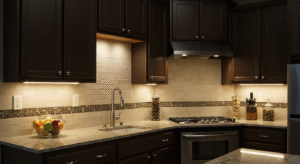
Understanding Your Rechargeable Cabinet Lights’ Battery System
Before we jump into the tips, it’s crucial to understand what you’re working with. Most rechargeable cabinet lights use lithium-ion or lithium-polymer batteries, the same technology powering your smartphone. These batteries have specific characteristics that, when properly managed, can provide exceptional longevity and performance.
The key to extending battery life lies in three fundamental principles: proper charging habits, optimal usage patterns, and regular maintenance. Master these, and you’ll see dramatic improvements in both battery life per charge and overall lifespan.
15 Expert Tips to Maximize Your Rechargeable Cabinet Lights’ Lifespan
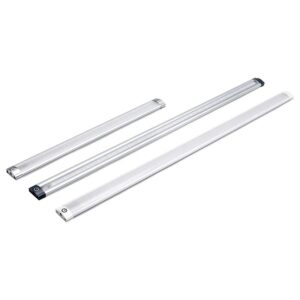
Charging Optimization Strategies
1. Avoid Complete Battery Depletion
One of the biggest mistakes people make is letting their rechargeable cabinet lights die completely before charging. Lithium-ion batteries actually prefer partial discharge cycles. Aim to recharge when the battery reaches 20-30% capacity rather than waiting for complete depletion. This single habit can increase your battery’s lifespan by up to 300%.
2. Don’t Overcharge Your Lights
While modern rechargeable cabinet lights have built-in overcharge protection, consistently leaving them plugged in for extended periods can generate excess heat, which degrades battery chemistry over time. Unplug your lights once they reach full charge, typically indicated by a green LED or solid light indicator.
3. Use the Right Charging Cable
Not all USB cables are created equal. Using cheap, low-quality charging cables can result in inconsistent power delivery, leading to incomplete charges and potential battery damage. Always use the manufacturer’s provided cable or a high-quality replacement with the correct specifications.
4. Charge at Room Temperature
Temperature plays a crucial role in battery health. Charging your rechargeable cabinet lights in extreme temperatures—whether too hot or too cold—can permanently reduce battery capacity. The ideal charging temperature range is between 32°F and 95°F (0°C to 35°C).
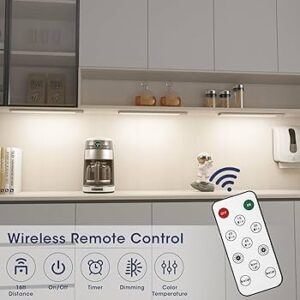
Top Amazon Brands for Motion Sensor Cabinet Lights To Consider
- EZVALO 5 Pack Under Cabinet Lighting, Rechargeable Motion Sensor Light
- BLS LED Closet Light, T401 Super Bright Wireless Under Cabinet Motion Sensor Light
- AIBOO Under Cabinet Lighting, Dimmable 12 inch Under Counter Lights
- EShine Hand Wave Activated Under Cabinet LED Lighting
- LEPOTEC Under Cabinet Motion Sensor Light
Usage Pattern Optimization
5. Adjust Brightness Settings Wisely
Most rechargeable cabinet lights offer multiple brightness levels. While maximum brightness is tempting, it dramatically reduces battery life. For most applications, 60-70% brightness provides adequate illumination while extending runtime by 40-50%. Reserve full brightness for tasks requiring detailed visibility.
6. Optimize Motion Sensor Settings
If your rechargeable cabinet lights feature motion sensors, fine-tune the sensitivity and duration settings. Overly sensitive sensors that trigger frequently or stay on too long will drain batteries quickly. Start with moderate sensitivity and 30-second duration, then adjust based on your usage patterns.
7. Strategic Placement for Efficiency
Where you install your rechargeable cabinet lights affects their efficiency. Avoid placing them near heat sources like stoves or dishwashers, as elevated temperatures increase power consumption and reduce battery life. Similarly, ensure they’re positioned to maximize light coverage, reducing the need for multiple units.
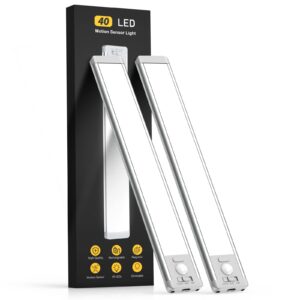
Environmental and Maintenance Factors
8. Keep Them Clean and Dust-Free
Dust and debris on LED surfaces reduce light output, causing you to increase brightness settings unnecessarily. Clean your rechargeable cabinet lights monthly with a soft, slightly damp cloth. Pay special attention to the LED array and any sensors, as buildup here directly impacts performance and efficiency.
9. Manage Ambient Temperature
Extreme temperatures affect both LED efficiency and battery performance. In hot kitchens, ensure adequate ventilation around your lights. In cold areas like garages or basements, consider bringing lights indoors during extreme weather to prevent battery chemistry changes that reduce capacity.
10. Regular Firmware Updates
Many modern rechargeable cabinet lights connect to smartphone apps that occasionally release firmware updates. These updates often include battery optimization improvements and efficiency enhancements. Check for updates quarterly and install them promptly.
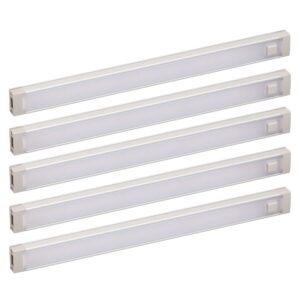
Advanced Battery Management Techniques
11. Implement Rotation Charging
If you have multiple rechargeable cabinet lights, rotate which ones you use most frequently. This prevents some batteries from cycling more than others, ensuring even wear across your lighting system. Keep a simple schedule or use different lights for different tasks.
12. Periodic Deep Conditioning
Once every three months, perform a complete charge-discharge cycle. Fully charge your rechargeable cabinet lights, then use them until they naturally shut off, followed by an immediate full recharge. This process recalibrates the battery management system and can restore lost capacity.
13. Monitor Performance Metrics
Keep track of how long your lights run between charges. Significant decreases in runtime (more than 20% reduction) indicate battery degradation or efficiency issues. Early detection allows for troubleshooting before complete failure occurs.
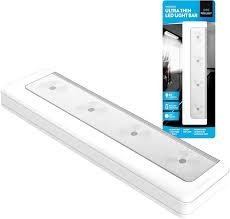
Storage and Seasonal Considerations
14. Proper Storage During Extended Non-Use
If you won’t be using your rechargeable cabinet lights for extended periods, store them with a 50-60% charge in a cool, dry place. Completely charged or depleted batteries stored long-term suffer capacity loss. Check and top off the charge every 2-3 months during storage.
15. Seasonal Usage Adjustments
Adapt your usage patterns to seasonal changes. During longer winter nights, you might need your lights more frequently, so consider reducing brightness or duration settings to compensate. In summer, when natural light is abundant, take advantage of reduced usage to give batteries periodic rest periods.
Common Mistakes That Shorten Battery Life
Understanding what not to do is just as important as knowing best practices. Avoid these common mistakes:
- Exposing lights to moisture or humidity without proper sealing
- Using lights as continuous ambient lighting rather than task lighting
- Ignoring manufacturer specifications for charging voltage and current
- Mixing old and new batteries in multi-unit systems
- Failing to clean connection points leads to charging inefficiencies
Signs It’s Time for Battery Replacement
Even with perfect care, rechargeable cabinet light batteries eventually need replacement. Watch for these indicators:
- Runtime reduced to less than 50% of the original capacity
- Lights are dimming significantly, even when fully charged
- Charging time is increasing dramatically
- Physical swelling or damage to the battery housing
- Frequent unexpected shutdowns
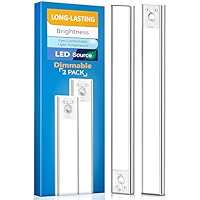
Long-Term Investment Perspective
When you implement these 15 strategies consistently, your rechargeable cabinet lights transform from a recurring frustration into a reliable, long-term lighting solution. The time invested in proper care and maintenance pays dividends in extended battery life, consistent performance, and reduced replacement costs.
Remember, quality rechargeable cabinet lights with proper care can deliver 2-5 years of reliable service, with some premium models lasting even longer. The key is treating them as the sophisticated electronic devices they are, rather than simple plug-and-forget appliances.
Your rechargeable cabinet lights have the potential to provide years of reliable, convenient illumination—but only if you give them the care they deserve. These 15 expert tips aren’t just maintenance suggestions; they’re your roadmap to maximizing your lighting investment and avoiding the frustration of constantly dead batteries.
From optimizing charging habits to adjusting usage patterns and maintaining proper environmental conditions, each strategy builds upon the others to create a comprehensive approach to battery longevity. The effort you put into implementing these practices today will reward you with consistent, reliable lighting for years to come.
Don’t let another day pass wondering why your lights keep failing. Start implementing these tips today, and transform your rechargeable cabinet lights from a source of frustration into the dependable lighting solution they were designed to be. Your future self—and your batteries—will thank you.
Top Amazon Brands for Motion Sensor Cabinet Lights To Consider
- EZVALO 5 Pack Under Cabinet Lighting, Rechargeable Motion Sensor Light
- BLS LED Closet Light, T401 Super Bright Wireless Under Cabinet Motion Sensor Light
- AIBOO Under Cabinet Lighting, Dimmable 12 inch Under Counter Lights
- EShine Hand Wave Activated Under Cabinet LED Lighting
- LEPOTEC Under Cabinet Motion Sensor Light


